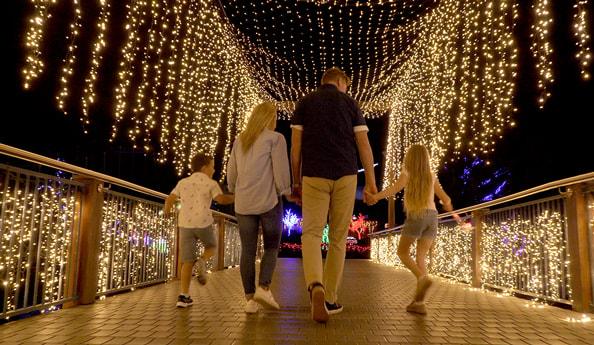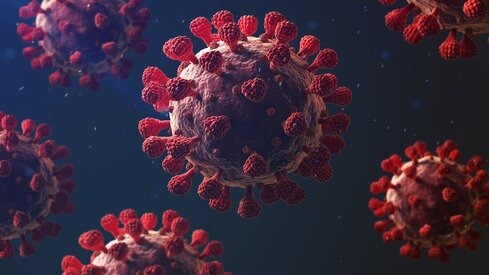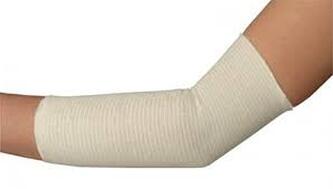|
What is aerobic fitness? Aerobic fitness can be defined as one’s ability to transport and deliver oxygen to the muscles, so it can be utilised to generate energy to support the activity of the muscle during exercise (1) There are three major components to aerobic fitness which can be viewed below (2).
General exercise recommendations for increasing your aerobic fitness 3
Training methods for increasing your aerobic fitness. There are three basic forms of aerobic fitness training: continuous training, interval training and Fartlek training (4). Continuous training Involves continuous exercise such as jogging, swimming, walking, or cycling, at “somewhat hard to hard” intensities without rest intervals. The prescribed exercise intensity is maintained consistently throughout the exercise session. Interval / HIIT training
Fartlek training Fartlek training or “speed play” is similar to interval training, but is a free form of training, which involves interspersing short bursts of intense/faster work throughout a continuous training activity. The exercise-rest cycle is not systematic or precisely timed and measured but is based on the feelings of the participant. The bottom line
Completing some form of aerobic exercise is better than completing no aerobic exercise. If you’re not sure where to start, it is best to start with small increments (5 – 10 mins) of light intensity exercise (walking or cycling) and slowly increase the duration over time. Once you can comfortability tolerant this, look to start increasing the duration. Once you can complete greater bouts of aerobic exercise look to increase the intensity, eventually aiming to reach the recommended guidelines. Bec Dostan
0 Comments
It’s the happiest time of the year…. And definitely the busiest for most of us too. With Christmas, School Holidays, Harvest, Frantic present shopping, busy work lives and all the day to day chores, it is easy for other things in life to slip by the wayside over this period. One of the most common includes exercise and our daily movement! It is easier to convince ourselves that we don’t have time to fit it in, than to make it work. BUT… today I am going to let you in on 4 fun and easy ways to get your movement in without even having to try. 1. GET WET We all love a water fight or a swim in the pool on a hot Summer's day. Don’t just watch the kids playing, get involved! Both you and them will have a blast and it won’t feel like exercise at all chasing each other around the backyard as water bombs fly over your head. 2. BUY AN OUTDOOR GAME Give the gift of movement that the whole family can enjoy together this Christmas. Sometimes the simplest things can be the most fun so why not give totem tennis, corn hole, Finska or even good old fashioned chasey a go to get everyone up on their feet this Holidays. 3. SEE THE CHRISTMAS LIGHTS BY FOOT Why not get the family in the Christmas Spirit by taking a walk one night to admire all of the Christmas lights around your street, block or even the whole town! Not only will you save yourself the fuel money but your body will love you for the extra steps in your day too. Plus the kids will be so entertained looking at the Christmas lights they won’t even notice that they are walking. 4. MAKE IT A TRADITION Why not start an active tradition that the whole family can get involved in to get moving around the holiday season. It might be an annual tennis tournament, a backyard cricket bonanza, a bike ride together on christmas morning! The possibilities are only limited by your imagination. Tailor it to your family and the things you love to do and everyone will be having a blast. Remember not to be too hard on yourself over the Holiday Period if you haven’t hit your usual physical activity goals. It is important to give your body time to rest, a chance to have fun with family and acknowledge all the hard work you have put in and the goals you have achieved over the last 12 months.
Written By, Aleisha Michael Accredited Exercise Physiologist Are you worried that if you start weight/ strength training that it will make you look bulky, too masculine or even like a bodybuilder? Well we are here to debunk that myth and let you know that is not the case! Weight training will actually cause you to tone up, decrease body fat and accentuate your curves for all the ladies reading! Here are 4 reasons why strength training should be a part of EVERYBODY’S routine and also why you won’t turn into Arnold Schwarzenegger either! 1. Muscles aren’t made overnight. Increased muscular hypertrophy and size is actually quite difficult to achieve and takes prolonged periods of time, consistency and dedication so it won’t happen the first time you pick up a dumbbell! It takes up to 3 months just to recognise any significant changes in strength or muscle size. To reach “body-builder” levels you would have to be training and eating in extreme fashions for years, we guarantee you it won’t happen to you by accident. The reassuring news is that to maintain and even increase our muscular strength and endurance we only have to be lifting weights on 2 days of the week. These improvements will help you with day to day activities (think lifting the kids/ grandkids, lifting pots/ soil in the garden or even just carrying the shopping bags!), increase your energy levels and confidence. 2. Six packs are made in the kitchen. If you have ever heard this saying before you might already know that having a toned figure will be the outcome of both what exercise you are doing and the food you are eating. To reach bodybuilder status you would have to be consuming an extreme amount of food to keep up with the demands of your body. In the opposite sense to reveal the toned muscles you have built up through strength training you will need to reduce your body fat that sits above them. This is achieved predominantly through diet, weight loss is approximately 80% diet and 20% exercise. 3. Weights help to shape your body.
Have you previously spent hours in the gym on the treadmill, cross trainer and bike trying to burn every ounce of body fat off, only to realise it still has not produced the figure you were hoping for? Creating a strong muscular foundation creates that “perkier” bum, toned arms, better posture and so much more. Increasing muscle mass helps to tone all over the body even without losing significant amounts of body fat. 4. You’ll burn more calories without even trying. Lifting weights doesn’t only impact the size and strength of your muscles… It improves a number of other physiological aspects too! Bone density, joint health, metabolism, brain health and energy levels all improve with weight training just to name a few! We also know that lean muscle mass burns more calories throughout the day regardless of what you are doing, when compared to fat mass. This means the more muscle you have, the more energy/ calories you will burn! So, if you have been avoiding the weights, now is the time to go and pick them up! What are you waiting for? Written By, Aleisha Michael Accredited Exercise Physiologist. COVID-19 is becoming increasingly prevalent both within our local community and the broader population and it is more than likely at this stage that either you or someone you know has contracted the virus. Find out everything you need to know about returning to exercise after a bout of COVID-19. So... How can COVID-19 affect my ability to exercise? Everyone has different experiences after contracting COVID-19 and this can all be related to your age, gender, overall health and symptom severity. You may initially experience symptoms such as a persistent cough, shortness of breath, fatigue, headaches, body aches, nausea or a sore throat, all of which will impact your ability to exercise. Furthermore if you experience “long-COVID” where symptoms persist for several weeks after having the virus, you may present with inflamed lungs causing significant shortness of breath or high levels of fatigue. These will both limit your physical function and capacity to complete moderate to vigorous intensity exercise. Should I exercise if I have COVID-19? The short answer is no. Research completed by the World Health Organisation tells us that up to 40% of people who contract COVID-19 will be asymptomatic and generally feel fine. If this is the case the recommendation is to complete light movement such as gentle walking or stretching but to avoid moderate to vigorous exercise. For those who do display symptoms of COVID-19 and feel unwell it is advised to rest, increase fluids and complete very gentle movement as even a short walk down the hallway can aggravate shortness of breath in some people. How long should I wait before returning to exercise? There is no one size fits all in regards to this question as recovery from COVID-19 will look different for everyone. Initially being cautious not to spread the virus to others when in the acute stage and presenting with symptoms. This means staying away from gyms, group exercise classes or team sports. Start small and gradually build up, try to think of any daily movement as a form of exercise and increase from there. For example doing a few walks up and down the hallway and stopping once you begin to feel uncomfortable. Exercise has been shown to increase stimulation of the immune system, assisting you to recover from COVID-19. Although be-mindful that mild symptoms can persist up to 6 weeks so it is important to listen to your body and rest when needed, when returning to exercise. How will I know if I am doing too much? It is important to listen to your body and be aware of what are “normal” signs and symptoms when exercising and what are not. For example it is “normal” to have some degree of shortness of breath and fatigue when exercising. It is NOT normal to have these symptoms when doing gentle, everyday activities that you could previously do with ease. The amount of time you had off from your regular exercise routine is also important to consider. After any period off from our regular exercise routine we need to regress exercises to adjust for our decreased strength and cardiovascular endurance. This may involve reducing the time or distance that you are completing during your cardio or the weight, repetitions or number of sets during strength based exercises. Lastly monitoring your symptoms after exercise and the next day will guide you in knowing if you are doing too much and need to slow down a little bit or if your body is responding well to your volume of exercise. If you are recovering from COVID-19 and not sure where to start when getting back into exercise, one of our Exercise Physiologists can assist you in this process, in a safe and individualised manner. Written by,
Aleisha Michael Accredited Exercise Physiologist So, you work in a physically demanding job and feel that this gets you enough physical activity throughout your day that you don’t need to do any extra, right?... WRONG. Whilst all this extra incidental activity throughout your day is giving you additional health benefits, it doesn’t give you the same BENEFITS as structured physical activity. What is the difference between incidental and structured physical activity? Incidental activity is defined as NON-PLANNED, UNSTRUCTURED ACTIVITY that accumulates in small portions over the course of a day. It can take many different forms including;
Whereas structured physical activity is PLANNED ACTIVITY that is completed in a continuous bout. This includes a planned walk, run or bike ride, gym sessions or classes or any other planned exercise session done individually or with others. Can I just do incidental activity? Whilst incidental activity provides many positive benefits it does not provide the same degree of benefit as structured physical activity. This is due to structured activity being completed in a continuous bout enabling our heart rate to increase, improving our cardiovascular and respiratory health. Completing specific strength training in planned exercise sessions also promotes a further increase in muscular strength and endurance when compared to incidental activity. Research has also shown that when activity is completed at a moderate intensity it assists in the prevention of a number of chronic conditions, including but not limited too;
What are the benefits of incidental activity?
By keeping your daily routine as active as possible there are a number of benefits that occur as well, such as;
So, what type of activity should I focus on? At the end of the day all movement counts and should be encouraged, whether it is a planned workout or sneaking a few extra steps in around the office! If you feel that you have been lacking with your structured physical activity recently, try adding in a few extra steps to your day by parking the car further away, taking the stairs instead of the lift or getting up from your chair once every hour! If you would like some more guidance about how to fit structured or incidental activity into your day try visiting an Accredited Exercise Physiologist! By, Aleisha Michael Accredited Exercise Physiologist. Injuries are a very common occurrence in sport or the workplace and there are a multitude of factors that play a role for an injury to occur. Injuries can be niggling and can threaten to derail your sports season. Injuries also play a role when it comes to limiting you at work and your everyday life and therefore I feel injuries are very important to manage correctly. Below will outline what the most recent and up to date research says about how you should go about your rehabilitation so you can recover in the quickest time possible with the best outcomes possible. Have you heard of RICE ( Rest, Ice, Compression and Elevation)? Or what about POLICE ( Protection, Optimal Loading, Ice, Compression, Elevation)? These 2 acronyms have been used throughout the years as ways to help people manage injuries and at the time were based on the latest research. These practices are still very commonly used when someone suffers an injury. But is this what the latest research says? Are we providing the best management for our injuries? In 2019 new research emerged and with it, a new acronym for us to live by when managing injuries, PEACE & LOVE. This new acronym helps us manage directly after an injury has occurred, but also gives us a framework for management to get back to pre-injury capacity. What does this mean for us who are trying to manage an injury? Well I will go through step by step. The word PEACE helps us understand what the necessary approach is directly after an injury has occurred. P for protection It is recommended to minimise movement and load on an injury for the first 1-3 days to reduce the risk of aggravating the injury, minimise bleeding to the area and prevent distension to the injured muscle. E for elevate Elevate the limb or body part higher than the heart to be able to remove any unwanted fluid around the injury. A for avoid anti-inflammatories The body’s way of repairing an injury is through inflammation. Inflammation carries all the right things for your body to go through the process of repairing itself. Therefore taking anti-inflammatories which are designed to stop this process could affect long term healing. What about ICE? It has been a stalwart in the injury management space for many years now but according to the most recent research it is unknown whether ice helps the healing process of an injury. It is believed ice reduces inflammation which we know is very beneficial and necessary to healing. In fact the researcher, by the name of Dr Gabe Mirkin, who invented the term RICE back in 1978, has retracted his research and now has the view that ice and rest may actually delay healing not help it. Ice is thought to have a pain relieving effect on an injury and therefore does have a role in injury management but not as initially first thought. C for compression Compressing an injury with external pressure like a bandage or compression garments you can buy these days assists to reduce swelling and muscle bleeding E for education Correct education from a health professional helps to avoid overtreatment and should give you the confidence in your body’s healing mechanism. You should be trying to stay away from passive treatments especially in the long term and try to use more active approaches to management. The mentality “I need fixing” is detrimental to your recovery. If you don't understand your specific injury or don't know how to rehabilitate it, speak to a health professional for help and education on correct treatment and load management for a full recovery. & After the initial management of an injury, all it needs is some LOVE. L for load Load should be added early on in your rehabilitation and you should try and resume your normal activities as soon as you feel comfortable doing so. Loading that does not exacerbate pain assists repair and recovery of your muscles, allowing you to regain the capacity and strength you previously had. O for optimism Psychological factors play a larger role in a person's recovery than people release. Factors such as catastrophizing your injury and fear or anxiety over your injury can prevent optimal outcomes. It is believed that psychological factors may drive the variation you see in certain injuries, more so than the injury itself. Stay positive, be optimistic and believe in your body’s healing process. V for vascularisation Aerobic exercise is a fundamental aspect of any injury rehabilitation process as it promotes blood flow to the injured area and is proven to improve mood, psychological well being and motivation. So find a pain free aerobic exercise that you enjoy and begin with that. E for exercise
Exercise is thought to be the gold standard in terms of treatment for injuries and research has demonstrated positive outcomes for all types of injuries. Exercise has many different mechanisms of improving the capacity of an injured body part or an injured person and it is important to continue to exercise any way possible through an injury period. There is plenty to understand and to cover when you get an acute injury however remember to use the acronym PEACE for directly after an injury has occurred and use love for the rehabilitation process. Bottom line is you want to stay as active as you can and in the beginning phase of an injury be guided by your pain to what you can and can't do. Loading the injury to a tolerable level is only helping healing, not hindering it. Izaac Boylan Accredited exercise physiologist  We all know that drinking water is good for us and often get told that we should be drinking more of it. But do we actually know why it is so important for us to increase our water intake and ensure that we are well hydrated? It is very common for individuals to not drink enough water day to day, but it becomes more frequent as we become older due to a decreased sense of thirst. This can lead to additional problems for those who are taking anti-diuretic medications that cause additional fluid loss. What are the benefits of drinking water?
When we don’t drink enough water, you can become at risk of dehydration. This can have negative side effects such as dizziness, weakness, low blood pressure, confusion, headaches and discolored urine. How much water should I drink per day? So how much water should we actually be consuming? The aim is to consume two to three cups per hour for healthy individuals, although this amount will vary if you are sweating through exercise, if temperatures are warmer or even just variation in our individual needs. There is also the possibility of consuming too much water particularly if you have certain health conditions such as thyroid disease, kidney, liver or heart complications. It is also possible if you are taking particular medications that may cause you to retain water, such as non-steroidal anti-inflammatory drugs, opiate pain medications and some antidepressants. If you believe that you may be affected by one of these conditions or medications, please discuss your water intake with your GP.  Tips to increase water intake.
By Aleisha Michael, Accredited Exercise Physiologist |
AuthorSLisa Parkinson Archives
July 2024
Categories
All
|















 RSS Feed
RSS Feed